We publish an inofficial and preliminarily translation of an article by the Brazilian democratic Newspaper A Nova Democracia about the people's struggle in Ecuador that was sent to us.
Ecuador: Peasant uprising reaches the capital and demands the overthrow of the reactionary government
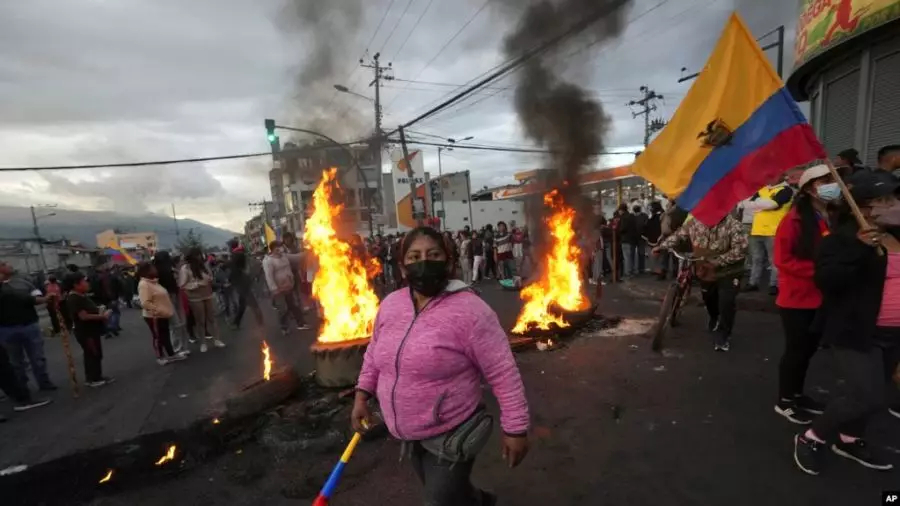
Demonstrators protest at a burning barricade in Quito, Ecuador, demanding the resignation of Guillermo Lasso, 20 June 2022.
The peasant strike that began on the 13th of June continues in Ecuador. During this period, the strike has turned into a huge popular rebellion of peasants, workers and other popular masses, which has taken the country from top to bottom and has surrounded the capital, Quito, to the countryside. Millions of peasants went to Quito to protest demanding the resignation of Guillermo Lasso from the presidency and thousands more continue to blockade roads, oil wells in protests in the interior of the country against the old order of oppression and exploitation.
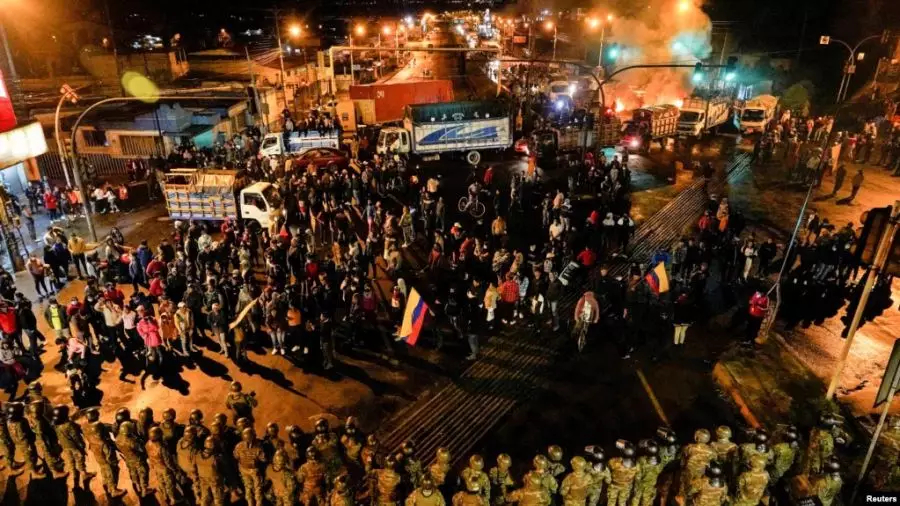
Riot police crack down on peasants arriving in Quito, June 19, 2022. Photo: Reuters/Johanna Alarcon
At least 16 of Ecuador's 24 provinces are mobilised by the strike. Of these provinces, previously only the provinces of Pichincha (whose capital is Quito), Cotopaxi and Imbabura were in a state of exception. However, the government of the banker president Guillermo Lasso, cornered, extended it to Chimborazo, Tungurahua and Pastaza.
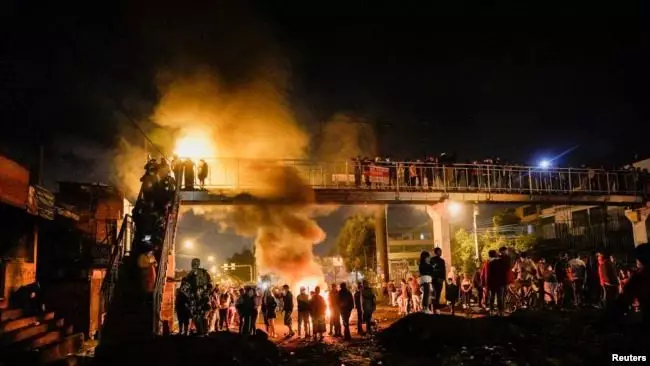
Peasants arriving in Quito hold roadblocks. Photo: Reuters/Johanna Alarcon
In Cotopaxi alone, epicentre of the demonstrations in the first week, there have been more than 63 mass actions registered by the Ministry of Interior. In addition, there are already more than a dozen police and military officers kidnapped by the rebellious masses throughout the Ecuadorian territory, and more than 15 vehicles attacked.
Before the big popular rebellion, Lasso, worn out and weak, said that he will increase economic aid for vulnerable sectors, he will subsidize the price of urea by up to 50% for small and medium-sized farmers, and the public banks will cancel all the loans due of up to three thousand dollars, as well as there will be no increase in the price of fuel, nor privatization of public services and strategic sectors. Promises that have not been able to fool the masses and divert them from the combative path of popular struggle.
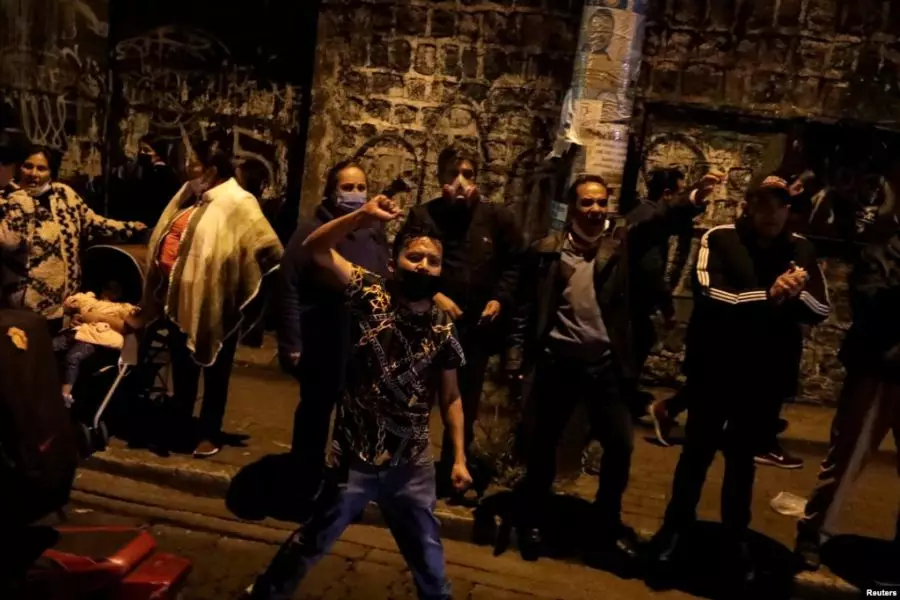
Demonstrators protest and demand the resignation of Guillermo Lasso on a burning barricade in Quito, Ecuador.
The demonstrators denounce that the measures of the reactionary and sell-out government do not solve the economic problems faced by thousands of families every day. The situation of the ruined peasant economy and the starvation wages of workers and laborers that decrease with every crisis, as well as the rights taken away with every agreement with imperialism - everything is being questioned by the masses in rebellion in Ecuador. The demonstrators are demanding the exit of the ultra-reactionary president, as well as the fulfilment of the 10 points of the National Agenda of Struggles launched at the beginning of the mobilisation.
Two youths murdered since the beginning of the strike
Two young people have already been killed during the national strike. The most recent victim, on the 22th of June, of the brutal police repression was Guido Guatatuca, a Kichwa youth in the town of Puyo, who died when a tear gas bomb exploded in his face and remained stuck to him. To deny the murder, the police claimed that Guido died from "handling explosives", however, videos of his murder clearly show that it was a tear gas bomb. Guido was a young peasant from the parish of Curaray, Ecuador's border with Peru, which belongs to the canton of Arajuno.
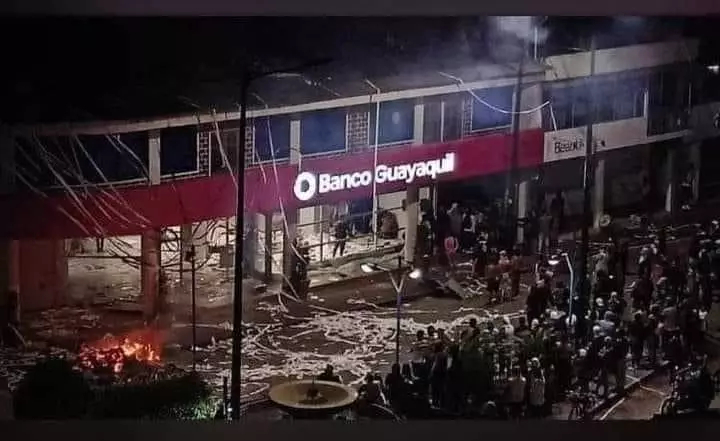
Bank of Guayaquil is destroyed after police murdered a peasant. Photo: Reproduction
Following his death, peasants in Puyo rebelled, a police station, destroyed a branch of the Bank of Guayaquil, seized the government headquarters and burned several police vehicles.
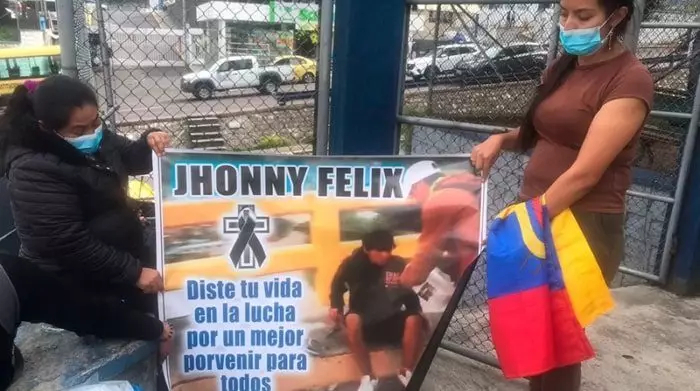
Jhonny's family holds up a sign that reads "you gave your life fighting for a better future for all". Photo: Patricia Armijos
A 22 year old young man, Jhonny Saúl Félix Muenala, who was on a march to Quito from the community of Cayabembe, in the province of Pichincha, died when he fell down a ravine during police repression against protesters arriving in Guayllabamba, near Quito. The young man fell about 100 metres, amidst the firing of tear gas bombs by the Ecuadorian Police on the 20th of June.
His relatives, who were marching near Quito, claim that for hours they heard the young man, fallen, calling for help. The brutal police repression and the darkness of the night did not allow relatives, friends and neighbours access to the place where the young man was.
Jhonny had become a father seven months ago of a baby boy and, according to his family, marched to Quito to demand a better future for his son. His mother says she says that "like everyone else", he was protesting against the difficult economic situation.
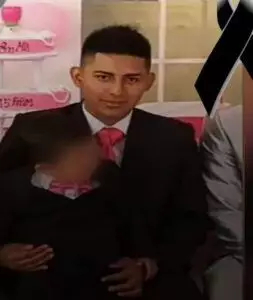
Photo of Jhonny Félix with his son. Source: El Comercio
Three other people were injured by the repression. One by tear gas bomb and two by rubber bullets. Around seven people were arrested.
The peasant group of the community managed to break the police siege and walked from 3 am until midday, until they reached the Capital.
People march to Quito
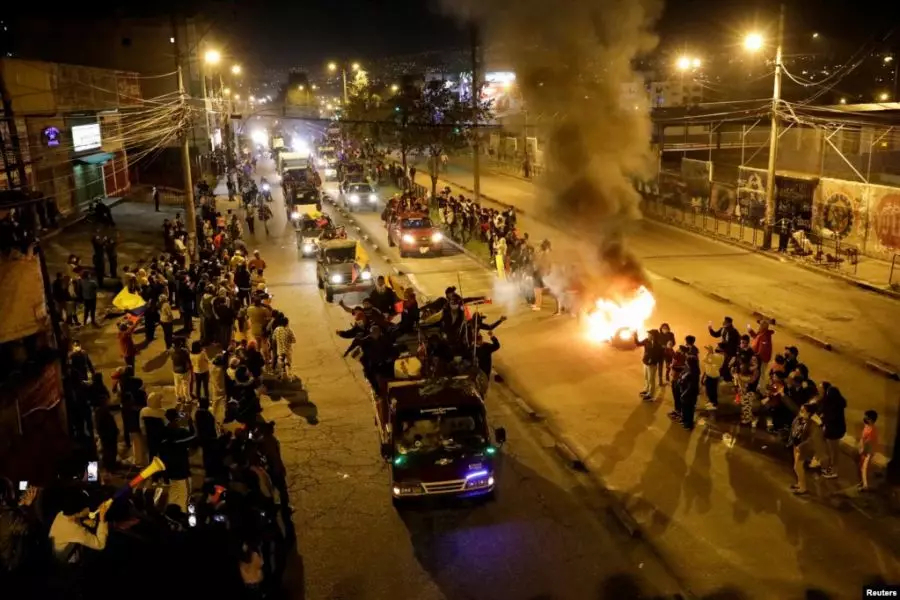
Demonstrators greet with celebration peasants arriving in Quito, 20 January 2022.
Despite the police blockades and curfews imposed by the reactionary government, thousands of peasants, workers and other workers arrived in Quito marching on foot or in trucks and cars to take part in the demonstrations in the capital. Since the beginning of the strike, the reactionary government of Lasso has used cowardly repression against the masses in struggle, mobilizing the reactionary armed forces to attack the demonstrators, who are resisting however they can.
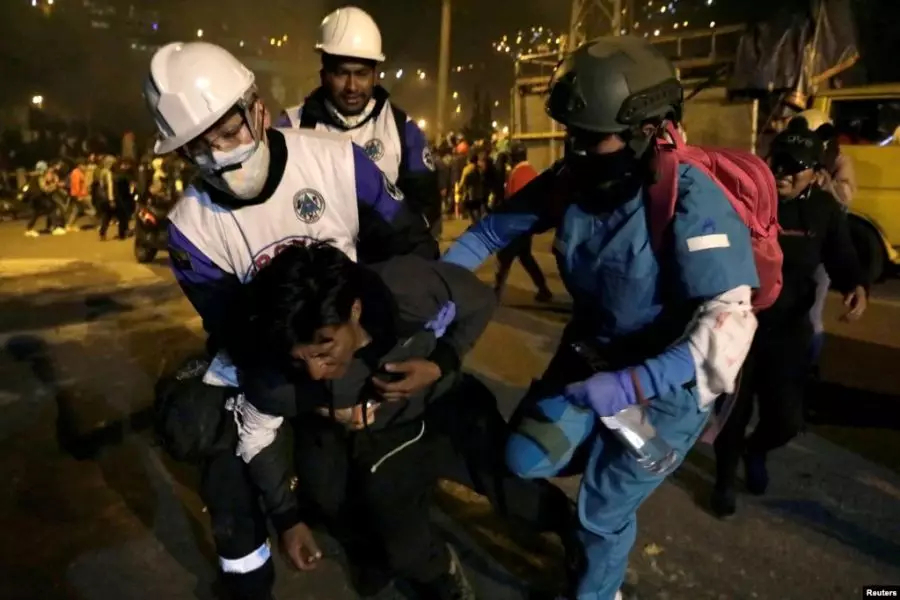
A demonstrator is assisted by health professionals after being intoxicated by tear gas fired by the police.
What has become evident, despite the repression and arrests against demonstrators, is that the demonstrators have managed to enter the city and have already been greeted with celebrations by the masses of the capital on the main arrival roads and by other demonstrators who were already there. Students from Quito universities have opened the doors of the universities to welcome the demonstrators, where pitched battles against police repression have also taken place.
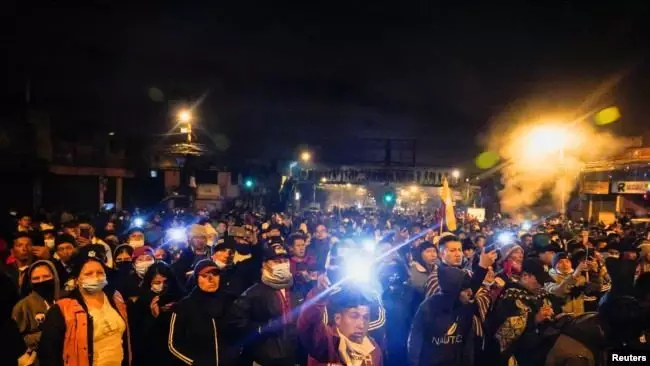
Peasants arrive from all over the interior of the country to Quito on the 19th of June.
In Quito, on June the 17th, the struggle was hard-hitting and combative. Transport was paralysed in most of the city and the struggle to break the siege around the Government Palace unleashed real battles. In the city centre, the masses resisted the reactionary military. There were also actions aimed at undermining the government's intentions to hand over the management of internal security to the USA and particularly to Israel. Amid the siege of repression, demonstrators carried out an act of burning the Israeli flag in denunciation of the semi-colonial condition that Lasso's government seeks to impose on the nation.
During the 18th, dozens of demonstrators gathered in the far south of Quito. In the area of Cutuglagua, where a blockade was taking place, a team of the Armed Forces and the National Police was sent to repress the people. However, minutes later, the demonstrators concentrated to the north, where new clashes took place. The Metropolitan Transit Agency (AMT) reported road closures due to demonstrations in five other points in the capital.
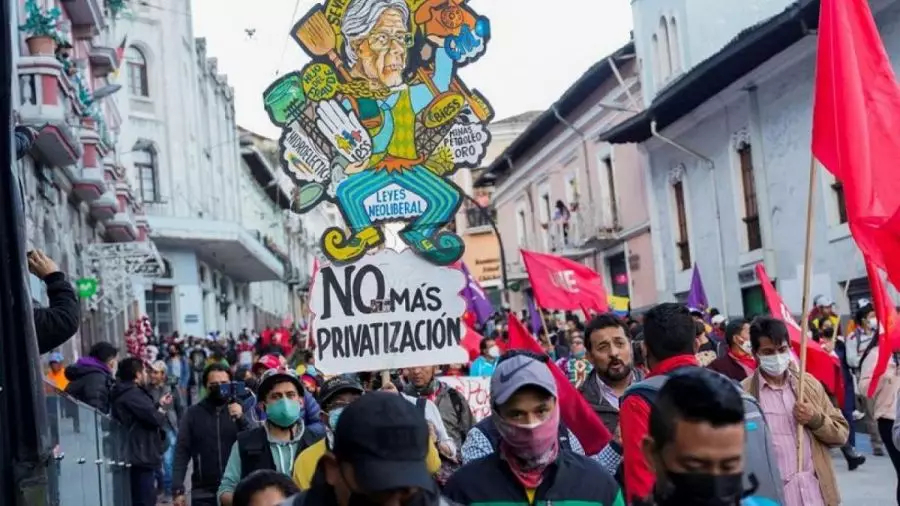
Young peasants, workers and students protest in Quito. Photo: Thomson Reuters
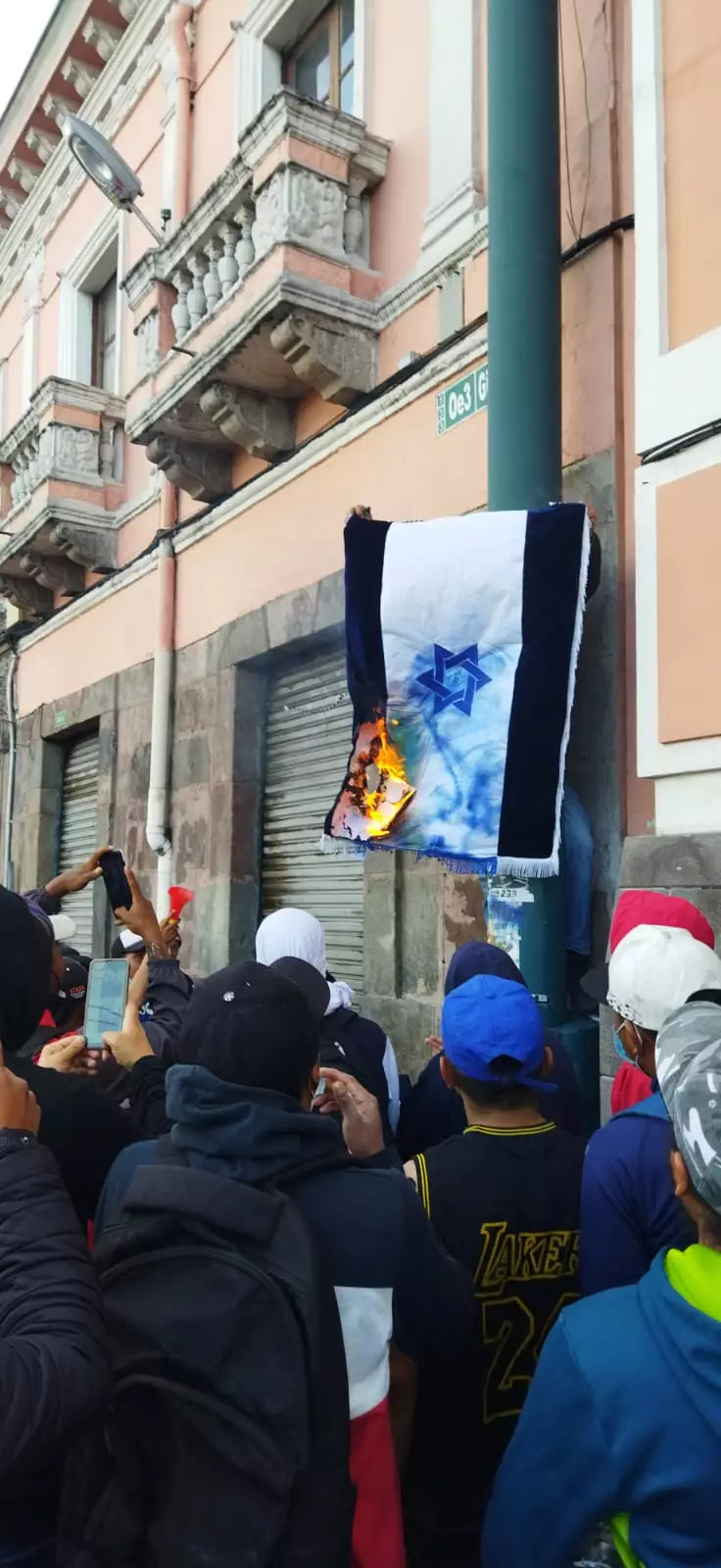
Photo: FDLP-EC
The headquarters of the Ecuadorian House of Culture (CCE) in Quito, founded in 1944 and which concentrates the capital's museums, film library and library, was seized by the Ecuadorian Police on the 19th of June to be turned into a police station. The president of the headquarters said that the last time the headquarters of the House of Culture was taken over by the police was 46 years ago, under the military-fascist regime.
The seizure of the CCE came after the Ecuadorian Public Ministry received an "anonymous tip" that inside the CCE there was a group of people, including foreigners, storing war materials such as explosives and craft weapons, in order to enter the Presidency of the Republic. Nothing was found inside the premises. The only "crime" that the CCE committed was, during the 2019 rebellion, to shelter for days demonstrators who headed from the interior of the country to Quito to protest.
The car of the Confederation of Indigenous Nationalities of Ecuador (Conaie), where the organisation's president was located, was fired upon on the 18th of June while it was parked in front of a television station. Furthermore, trucks full of military and police officers are installed around the Conaie headquarters in Quito, promoting follow-ups through surveillance cameras, inserting undercover agents and carrying out fustigations against the demonstrators during the early hours of the morning.
Workers' Peasants' Alliance
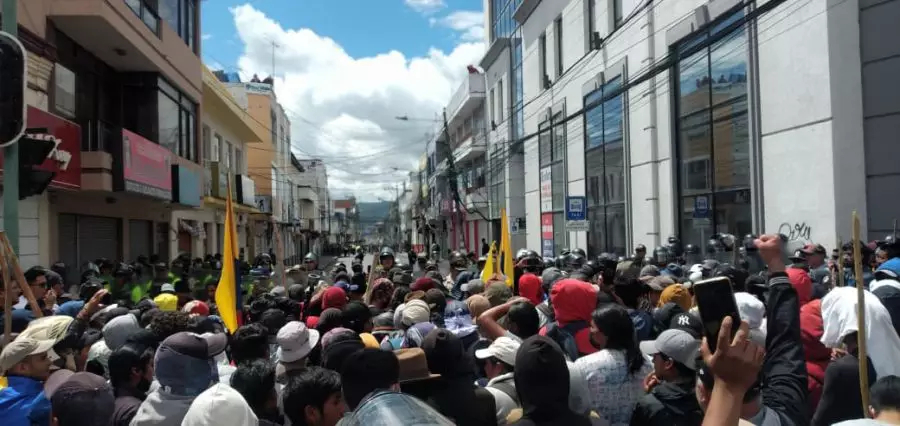
Photo: FDLP-EC
In the province of Imbabura, particularly in the city of Ibarra, the alliance between workers and peasants completely paralysed the city. Commerce was closed, the police were repelled and all local activities were paralysed.
The Workers' Defence Front of Imbabura, which brings together several unions among workers and rural workers, blocked the main entrances and exits to the city, demanding the withdrawal of Guillermo Lasso from the government and stating that there is no possibility of negotiating with the banker president. The workers also pointed out that no popular leader could be talking about "dialogue", and that the only way out of the crisis comes with Lasso's resignation. In Ilumán, although a group of opportunist organisations decided not to join the mobilisations, the masses, in an independent and combative manner, paralysed the Pan-American Highway.
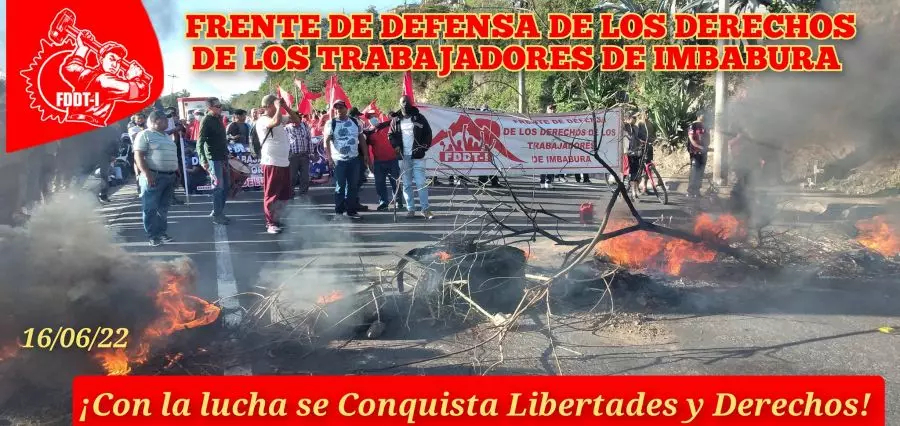
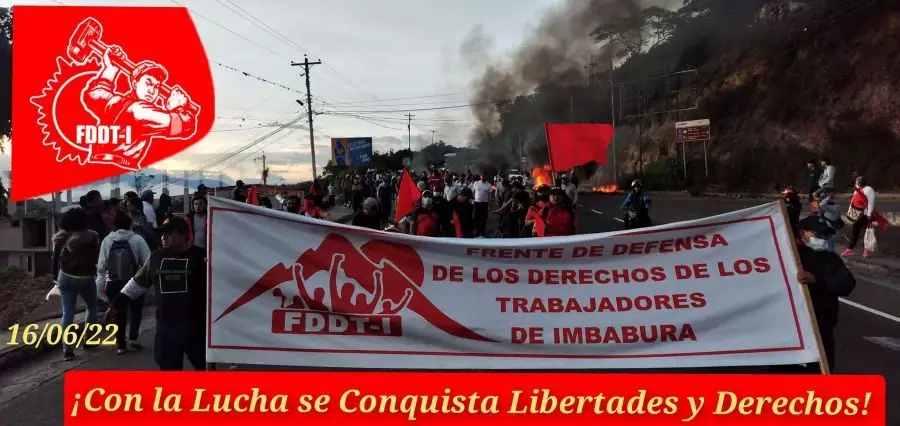
Photos: FDDT-I
In Chimborazo, the Poor Peasants Committees (CCP) again closed the road linking the province to Pallatanga. The town centre was also completely taken over by the indigenous peoples and peasants. In addition, many masses of the CCP are marching towards the capital.
Peasants prevent oil production for export
Oil is the main export product of Ecuador. Peasants and workers, tired of having to pay a high price for an abundant product - that is only exported to imperialist countries and for very low prices - and that is exploited over vast stretches of land - occupying peasant lands and driving them out - have massively blockaded the oil fields spread throughout the national territory and have even seized Petroecuador's installations. Currently there are more than 609 paralysed oil wells in the Amazon region.
The general manager of Petroecuador also pointed out that there have been 124 "incidents on roads within their areas of operation", such as cutting down trees to block roads, which led them to file 20 charges of sabotage, without any arrests so far.
In Limoncocha, in oil block 15, in Sucumbíos, peasants who sought to enter the block to protest against oil exploration on their land responded to repression by dozens of military personnel from the reactionary Armed Forces and some 10 seriously injured military personnel were taken to hospital.
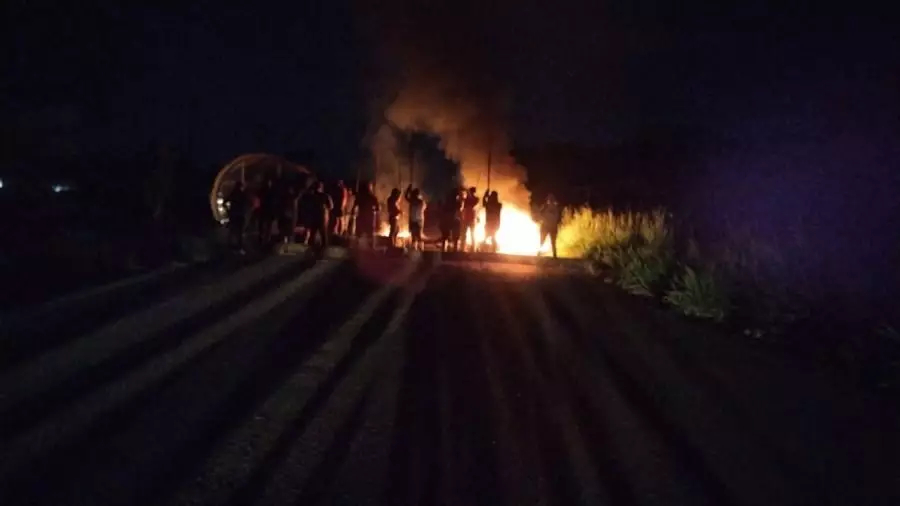
Peasants blockade oil block 15 in Limoncocha. Photo: Reproduction
In San Sebastian del Coca, located in Orellana province, the local population who were blocking the bridge in Cañón de los Monos, was brutally repressed on the 19th of June by the reactionary army to allow trucks from an oil company to pass. The people had been blocking the bridge for six days, allowing only pedestrians and emergency vehicles to pass, and during a timetable established for the passage of vehicles in general.
The attack against the workers began at 2am in the morning and the peasants and workers resisted for about two hours against dozens of tear gas bombs used by the reactionary military. A vehicle was set on fire by the local population. In the end, the military retreated in the face of the fury of the masses and the blockade continued on the Payamino bridge.
In another sector of Orellana province, in Dayuma parish, the Waorani community of Yawepare held a blockade on the road to Pindo and in defiance of the reactionary Army's presence in the area, the community refused to allow the generators of oil block 14 to be switched on.
On the 19th of June, in the province of Pastaza, in the city of Villano, peasants maintained the blockade of oil block 10, which was guarded throughout the week by police and military.
Peasants take over government buildings across the country
The seat of government of the province of Pastaza, in the city of Puyo, was completely taken over by protesters. More than 300 peasants marched to the place from different interior communities, they broke down the iron fences surrounded by police that prevented their advance and, in view of the great numerical superiority over the reactionary military contingents, who could do nothing to prevent the victorious action of the masses, the people seized the seat of government. A soldier from the reactionary armed forces was taken to hospital during the confrontation with the masses.

Peasants take the town of Puyo. Photo: El Universo
In the province of Macas, city of Morona Santiago, more than a hundred people broke through the police siege and also seized the seat of government. In the province of Guaranda, city of Bolivar, the demonstrators managed to enter the seat of government and occupied it, placing the flags of their peoples on the terrace.
'We don't want dialogue, we will march to Guayaquil'.
On the 18th of June, indigenous people from La Maná, Cotopaxi province, announced a march to Guayaquil, the second largest city in the country. "We have made a decision: we will advance to the city of Guayaquil, we will get there. We don't want dialogue, we want the government to withdraw," said an indigenous leader after the peasant community was attacked by the National Police. And he assured that they will go to the city despite the obstacles placed by the Guayaquil Municipality, such as trucks and heavy machinery at the five entrances to the city to prevent protesters from entering.
'Until the banker is overthrown!'
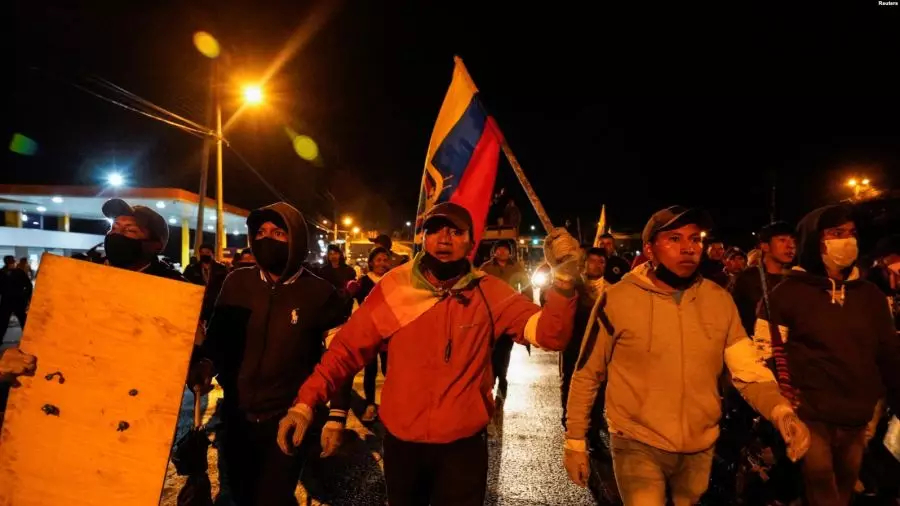
Peasants from all over the country arrive in Quito on the 19th of June. Photo: Reuters/Johanna Alarcon
The Front for the Defence of the People's Struggles (FDLP) of Ecuador states that since the masses have answered the call and are mobilising throughout the country, the 10 points of the National Agenda of Struggle are not enough: "the correlation of forces has changed, the scenario is different from before the mobilisations began, what now corresponds is to unilaterally overthrow the banker; there is no room for dialogue, for agreements, or have we not learned from October when Moreno, the servile dog of the USA, deceived the indigenous/popular leadership?"
On this, the revolutionaries say that this is not a re-edition of the rebellion of October 2019, the characteristics of this revolt are different: "The old bureaucratic-landowning state approaches it in a different way, it has learned a lesson from how they were humiliated, crushed, defeated in that rebellion; and the masses know it, and we understand that the characteristics we must imprint on this struggle are also of a different kind: Of attrition, of weakening the productive apparatus, of strangling the big cities from the countryside, of the political deterioration of the government and its repressive apparatus, today more anti-popular than ever, of isolating the opportunists until the final blow is delivered."
The cowardly repression carried out by Lasso's reactionary government is also denounced: "The response of the government and the state has been repressive, harsh, and it could not be otherwise (...) [all this] shows the intentions of the regime to remain in government at any price, in fact assuming fascist behaviour". And he also denounces that opportunism and reaction have united in parliament to approve "the progressive use of force, a legal tool that the members of the repression shouted aloud and that without any consideration whatsoever, they are now ready to apply in the course of the mobilisations. This means that there was already a fully defined plan of persecution and neutralisation of political activists as a prelude to the current repressive campaign", recalling also that before the Conaie was convened, a group of youths had already been arrested on charges of "terrorism" and "subversive activities".
The revolutionaries also assert, "Lasso has pointed out that he does not need the National Assembly to govern; he has developed a populist campaign to win supporters among the battered citizenry; he has involved the US and Israel in internal security matters, further ceding national sovereignty; finally, he is relying on repression to try to maintain the government and a political project that aims to reactivate bureaucratic capitalism from the interests of the big comprador bourgeoisie, the big businessmen, bankers, landowners and importers."
Therefore, they state that "there is no turning back, this mobilization must go deep and even up, we must expel the banker from the government, we must neutralize the plan of imperialism to deepen the semi-coloniality of our country, we must seal with struggle not only the objectives of reaction, but also the discriminatory and racist voracity of the big bourgeoisie that with crude pretensions spews its feudal rancour."
The revolutionaries have also launched a series of publications on their website, pointing out the need to denounce the crimes of repression, to demand the immediate release of all political prisoners, and to put an end to the pacifist illusions of trusting in the promises of the old Ecuadorian bourgeois-landowning state, servant of imperialism, especially US imperialism.
